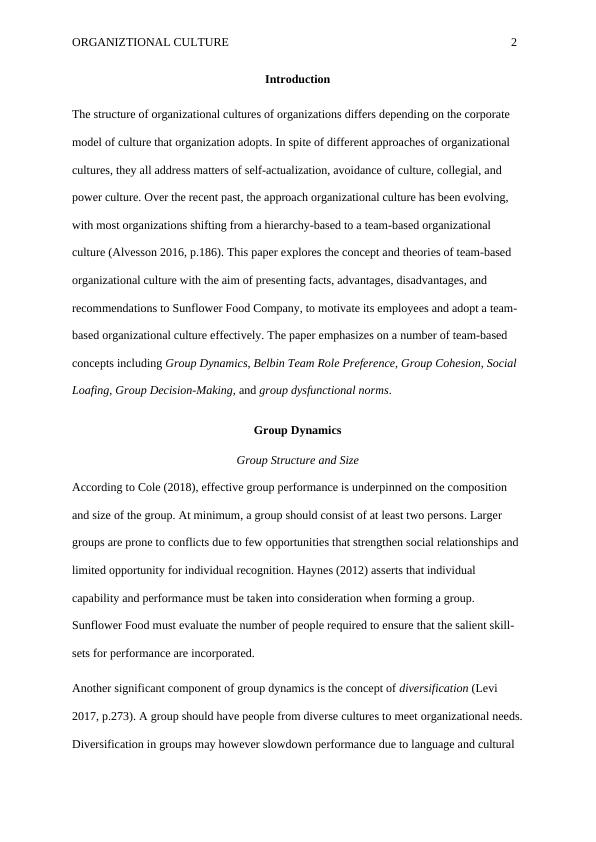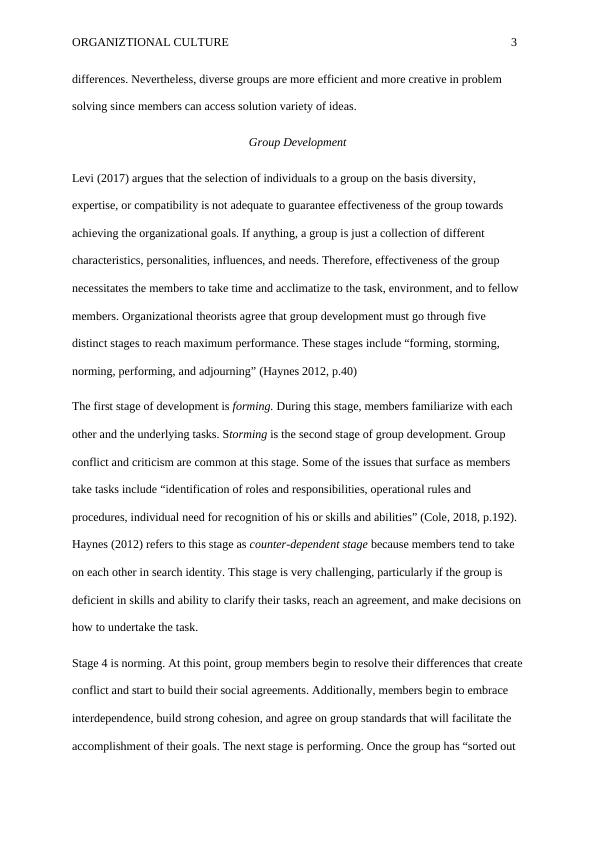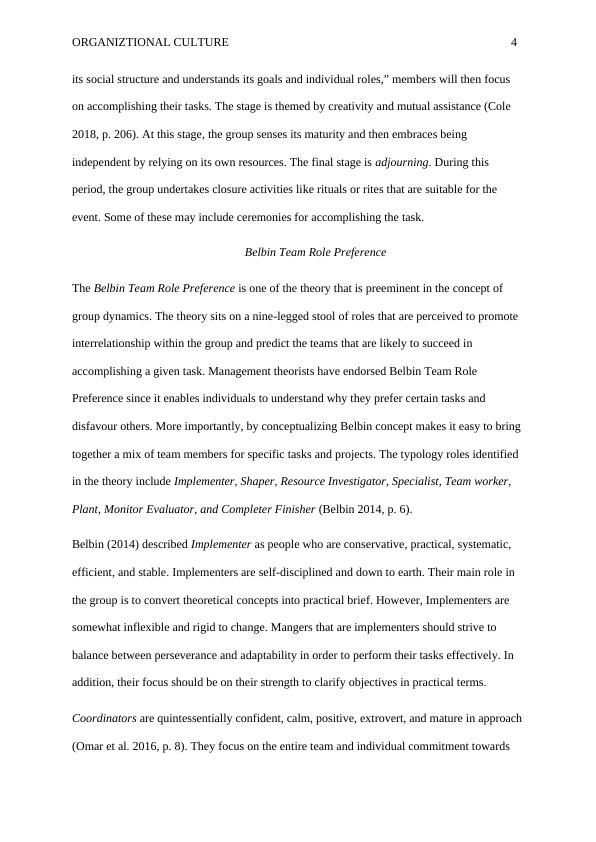Team-Based Organizational Culture: Concepts, Theories, and Recommendations
Write an informal report based on a case study about managing organization, using specified theories and frameworks.
14 Pages4114 Words329 Views
Added on 2023-06-11
About This Document
This paper explores the concept and theories of team-based organizational culture with the aim of presenting facts, advantages, disadvantages, and recommendations to Sunflower Food Company, to motivate its employees and adopt a team-based organizational culture effectively. The paper emphasizes on a number of team-based concepts including Group Dynamics, Belbin Team Role Preference, Group Cohesion, Social Loafing, Group Decision-Making, and group dysfunctional norms.
Team-Based Organizational Culture: Concepts, Theories, and Recommendations
Write an informal report based on a case study about managing organization, using specified theories and frameworks.
Added on 2023-06-11
ShareRelated Documents
End of preview
Want to access all the pages? Upload your documents or become a member.
Teamwork enables people to achieve team goals
|15
|3601
|473
Elements of Group Dynamics and Conflict Resolution Methods
|6
|2124
|20
The Organization: Organizational Culture, Tuckman Theory, Communication, Recruitment, and Stress Management
|12
|2451
|406
Team Management: Developing High Performing Teams and Virtual Team Challenges
|10
|1828
|434
Tuckman's Group Development Model | Assignment
|16
|4640
|154
Analysis of Proper Teamwork
|9
|709
|392




